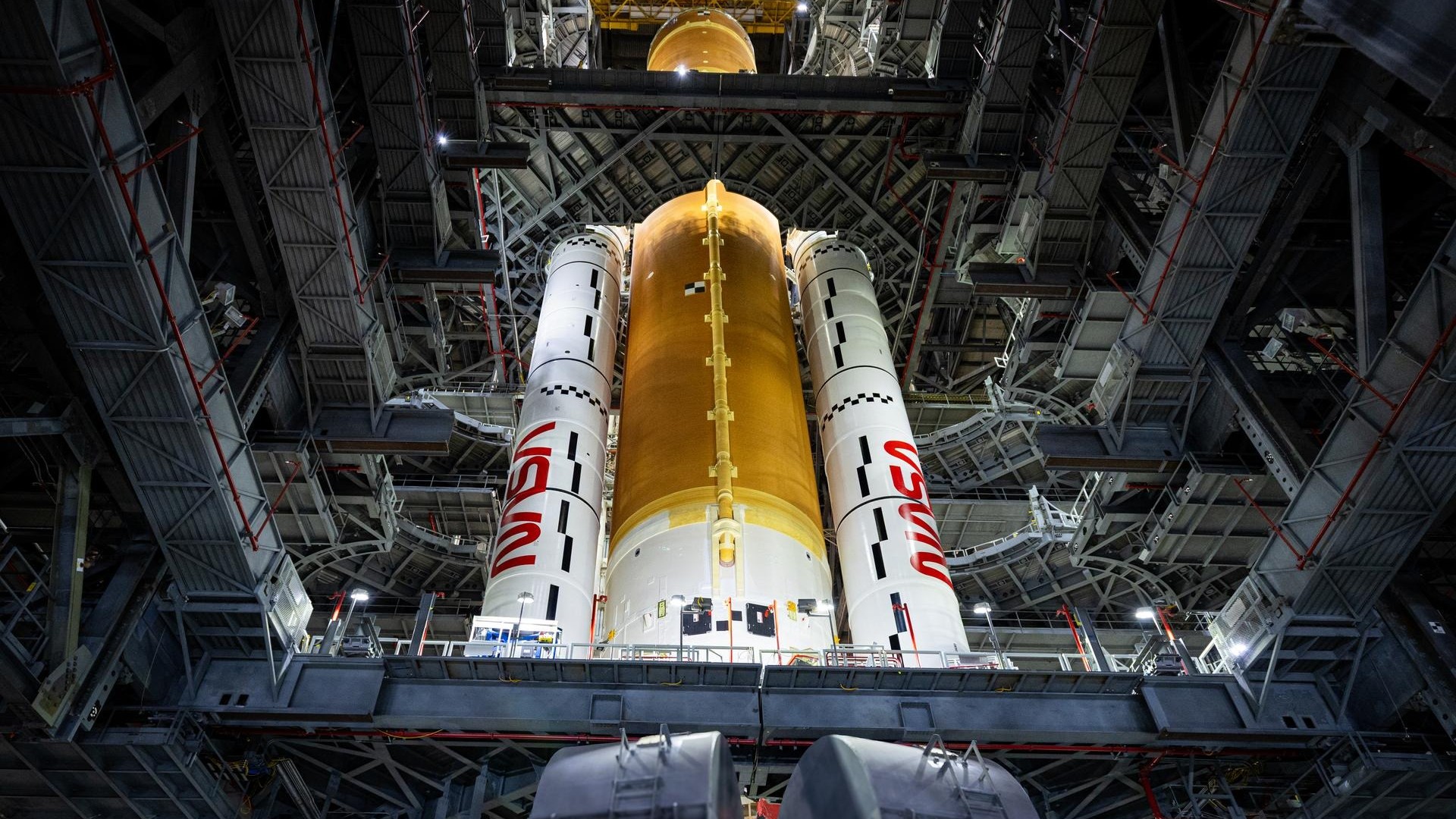Mars helicopter Ingenuity flies higher and longer on Red Planet in 2nd flight
The second-ever Mars helicopter flight is in the books.
NASA's little Ingenuity helicopter took to the skies above Mars' Jezero Crater again early this morning (April 22), just three days after making history with the first powered, controlled flight on a world beyond Earth.
Monday's landmark 39-second debut flight was a straight up-and-down trip that took Ingenuity just 10 feet (3 meters) off Jezero's dusty floor. The helicopter team pushed the 4-lb. (1.8 kilograms) rotorcraft a little harder during today's 52-second sortie, which lifted off at 5:33 a.m. EDT (0933 GMT).
"Go big or go home! The Mars Helicopter successfully completed its 2nd flight, capturing this image with its black-and-white navigation camera," officials with NASA's Jet Propulsion Laboratory in Southern California wrote on Twitter. "It also reached new milestones of a higher altitude, a longer hover and lateral flying."
Video: Zoom in on Ingenuity helicopter's 1st flight on Mars
More Mars helicopters? NASA is already thinking about Ingenuity's successors
Today's flight plan called for Ingenuity to climb to 16.5 feet (5 m), hover, tilt slightly and move sideways for 6.5 feet (2 m), Ingenuity project manager MiMi Aung, of NASA's Jet Propulsion Laboratory in Southern California, wrote in a preflight blog post yesterday (April 21).
"Then Ingenuity will come to a stop, hover in place and make turns to point its color camera in different directions before heading back to the center of the airfield to land," Aung wrote.
Breaking space news, the latest updates on rocket launches, skywatching events and more!
NASA's Perseverance rover watched all of today's aerial action from about 210 feet (64 m) away, just as it did on Monday. Imagery and other data captured by the six-wheeled robot started coming down to Earth at 9:20 a.m. EDT (1320 GMT), agency officials said.
Ingenuity is a technology demonstration designed to show that aerial exploration is feasible on the Red Planet despite the thin atmosphere of Mars. Helicopters could become common elements of Red Planet missions in the future thanks to Ingenuity's pioneering work, NASA officials have said.
The little chopper and Perseverance landed together on Feb. 18. On April 3, Ingenuity deployed from the rover's belly and began prepping for its month-long flight campaign.
Aung and her team plan to conduct three more flights in the two weeks they have left. These sorties will get progressively more complex and ambitious, and the final two will likely be "really adventurous," Aung said during a news conference earlier this month.
Perseverance is supporting Ingenuity's efforts, serving as a communications relay between the solar-powered helicopter and its handlers here on Earth. The rover is also documenting the historic aerial campaign, as the amazing video of Ingenuity's first flight shows.
But Perseverance needs to start focusing on its own mission soon, which is why Ingenuity's flight campaign must come to an end in early May. The rover will hunt for signs of ancient Mars life in Jezero, which hosted a big lake and a river delta long ago, and collect samples for future return to Earth.
Perseverance also carries another technology demonstration: an instrument called MOXIE ("Mars Oxygen In-Situ Resource Utilization Experiment") that generates oxygen from the carbon dioxide-dominated Martian atmosphere.
Scaled-up versions of MOXIE could help human explorers get a foothold on the Red Planet, NASA officials have said. And that dream got a little closer to reality on Tuesday (April 20), when MOXIE produced oxygen for the first time.
This story was updated at 1:05 p.m. EDT with some new flight details, including its duration.
Mike Wall is the author of "Out There" (Grand Central Publishing, 2018; illustrated by Karl Tate), a book about the search for alien life. Follow him on Twitter @michaeldwall. Follow us on Twitter @Spacedotcom or Facebook.

Michael Wall is a Senior Space Writer with Space.com and joined the team in 2010. He primarily covers exoplanets, spaceflight and military space, but has been known to dabble in the space art beat. His book about the search for alien life, "Out There," was published on Nov. 13, 2018. Before becoming a science writer, Michael worked as a herpetologist and wildlife biologist. He has a Ph.D. in evolutionary biology from the University of Sydney, Australia, a bachelor's degree from the University of Arizona, and a graduate certificate in science writing from the University of California, Santa Cruz. To find out what his latest project is, you can follow Michael on Twitter.

